An original portrait of Yuchen Yang was printed on Canaletto and tracing paper in 2018. (fig 1) The former for traditional fine art print and the later to experiment with the image on transparent paper and the creating of dot matrix patterns from the vacum screen bed.
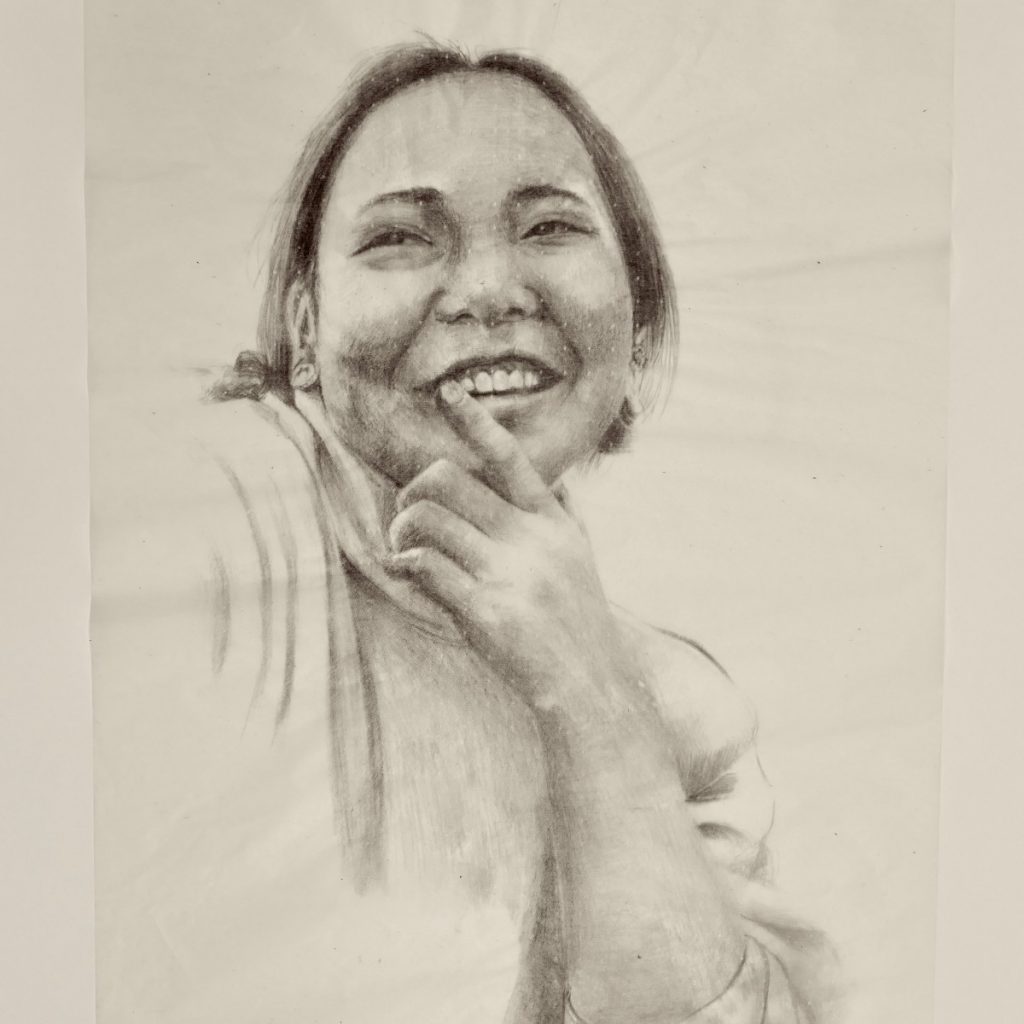
A further print was made on Gampi paper, and hung at 45 degrees from vertical from a gallery wall where the light weight print wafted in the gallery air flows. Fig 2.
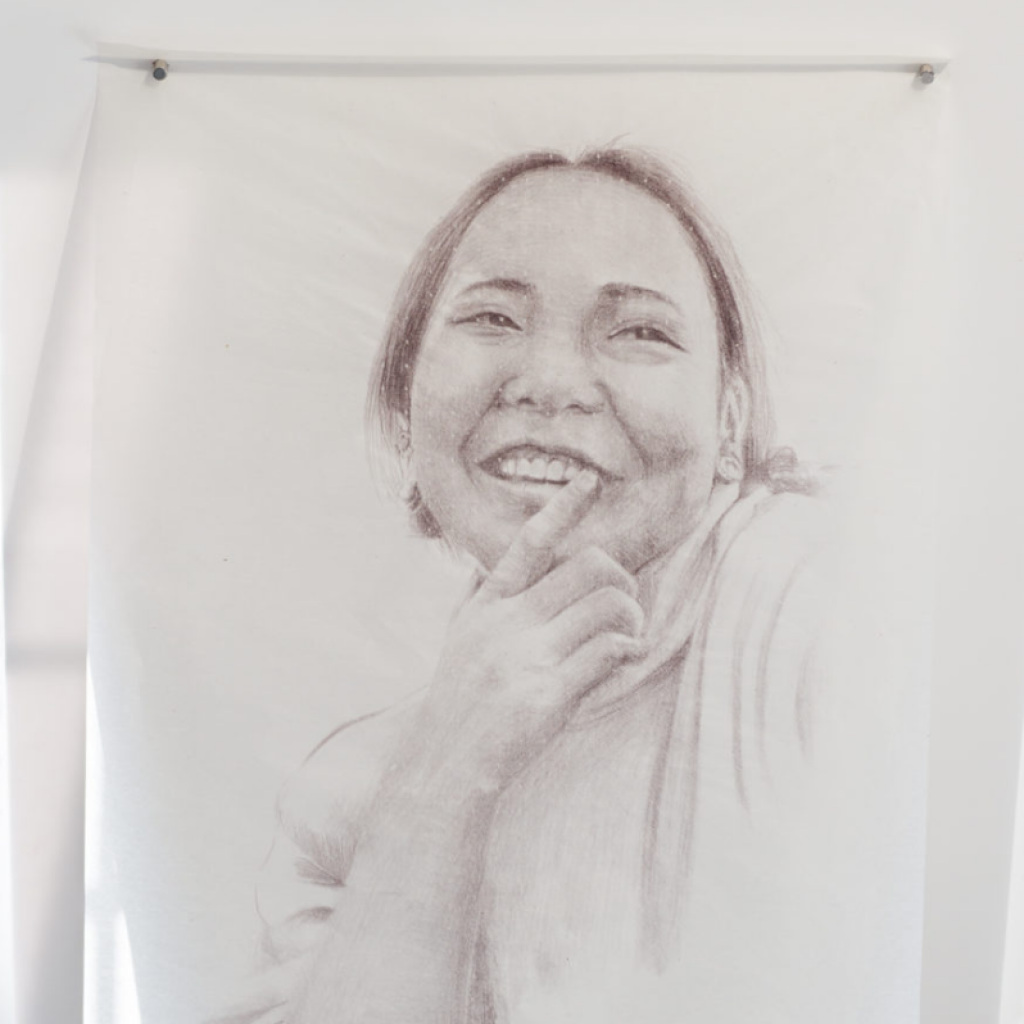
A new Portrait.
For a new 2020 portrait print of the subject smooth paper, cartridge and tissue was employed. In addition an alternative Japanese paper was sourced: Gifu 9gsm. This is finer than gampi and with a fabric texture and it is so light it floats. An investigation on how it might take screen ink and be displayed was embarked upon. During printing problems arose. Rather than the vacuum holding the paper to the bed, the wet ink held it to the screen, lifting it off the bed as the paper was porous and the vacuum air was sucked through it, rather than adhering to the vacuum bed. Not only was the porous gifu paper held by the ink on the screen, the ink had been pushed through the paper onto the screen bed leaving an impression on the bed. Peeling the inked paper from the underside of the screen was difficult as the delicate material could tear. As it was peeled back the inked image attached itself to the paper leaving an unhelpful ink residue on the image and surround, rendering the print useless.
To address this problem the gifu paper was registered under the screen. Rather than rely on the vacuum to secure the paper in position and separate the paper from the screen once the ink was deposited, it was taped on all 4 sides. A sheet of cartridge paper was placed under the gifu paper to protect the screen bed and to provide smooth flat surface for the porous paper to receive the ink. This would also prevent a matrix of empty dots being created from the vacuum suction holes being pulled down and preventing the ink reaching the substrate. This securing of the 9gsm Gifu paper successfully enabled the ink to be pressed on to the paper and the screen to be carefully lifted away from the paper while it was held in place by the masking tape.
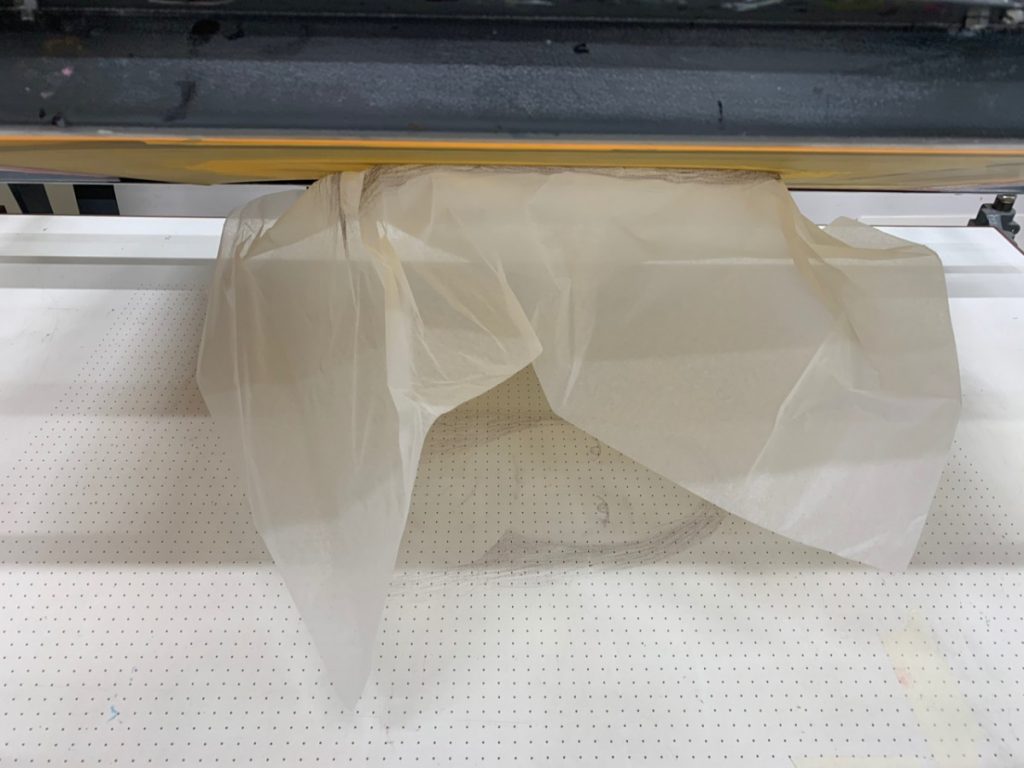
Gifu paper sticking to the screen via ink 1 
Gifu paper sticking to the screen via ink 2 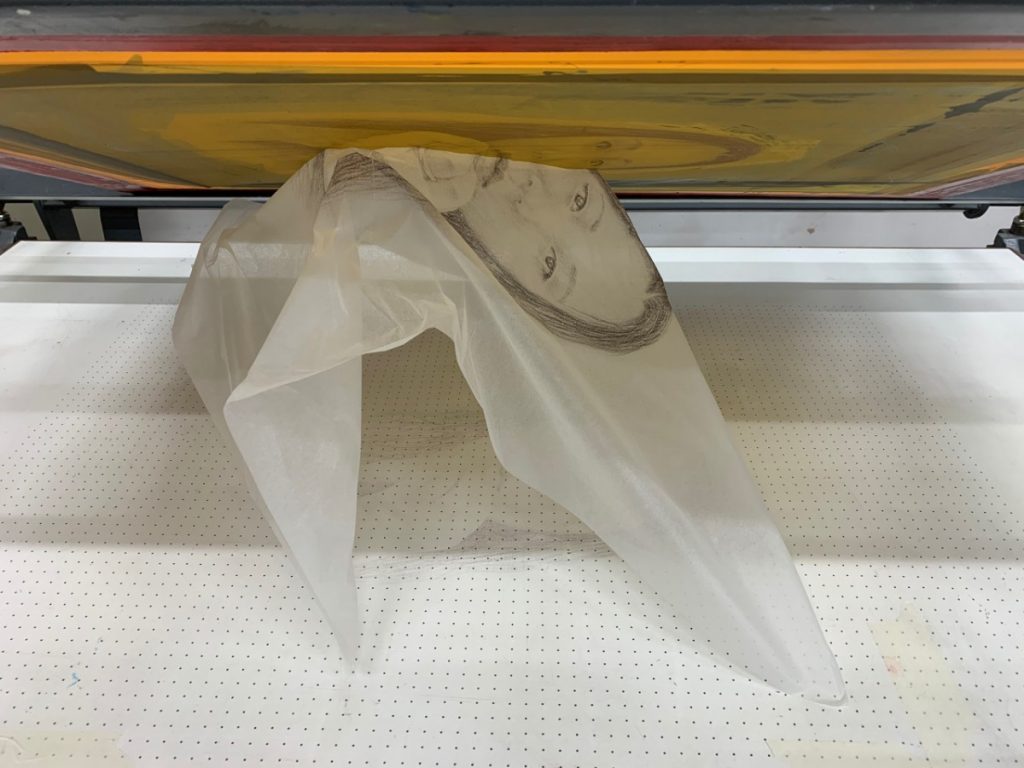
Gifu paper sticking to the screen via ink 3 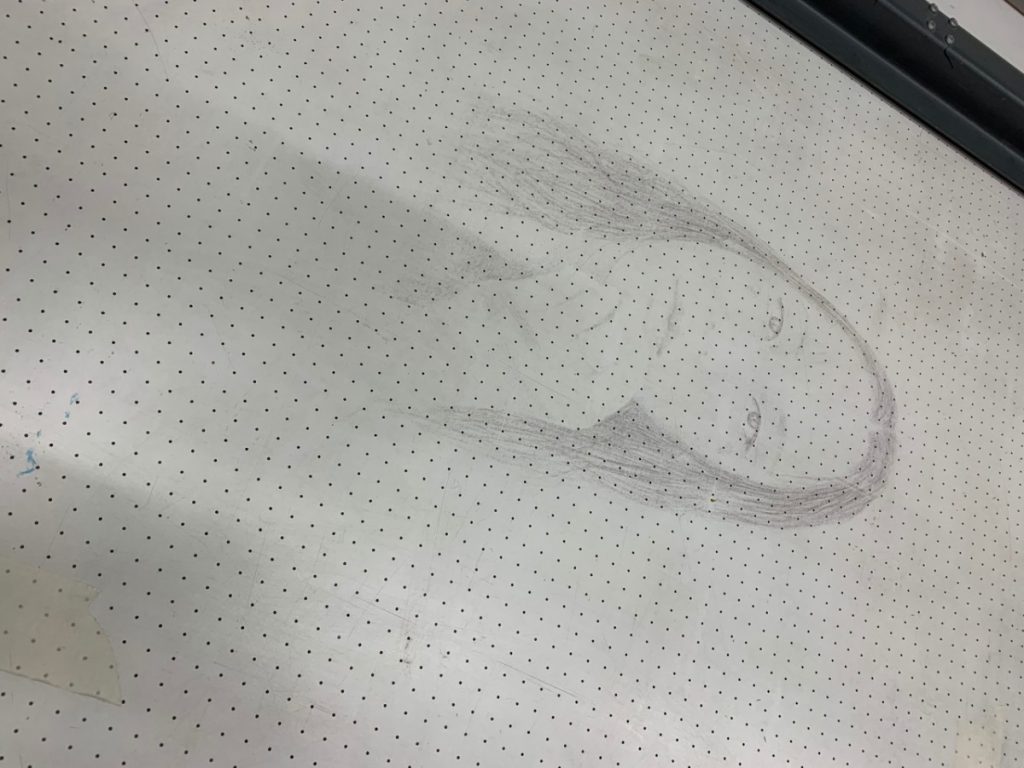
impression left on bed through porous paper 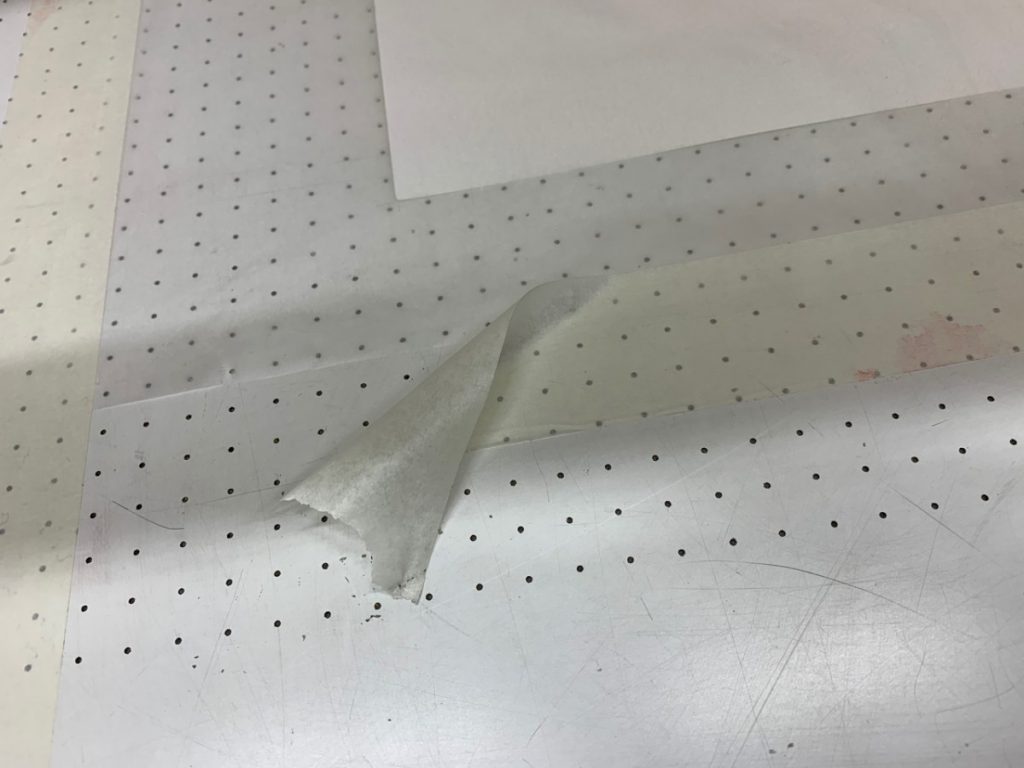
Tape to edges 
all four edges taped 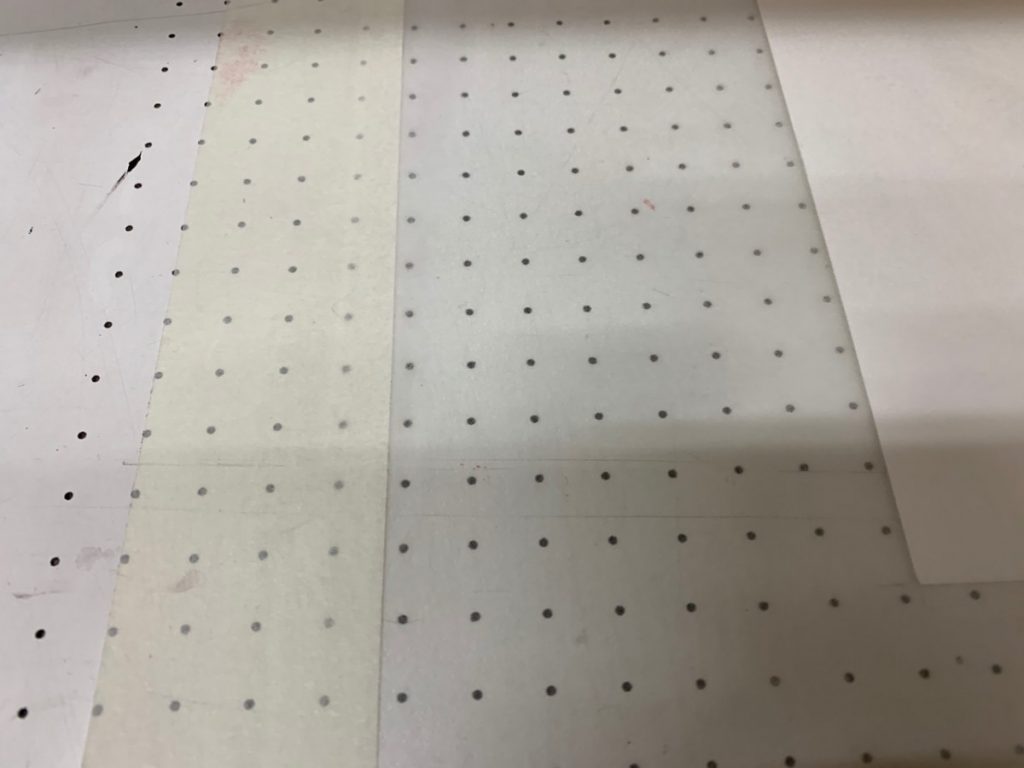
all edges with a sheet of cartridge below 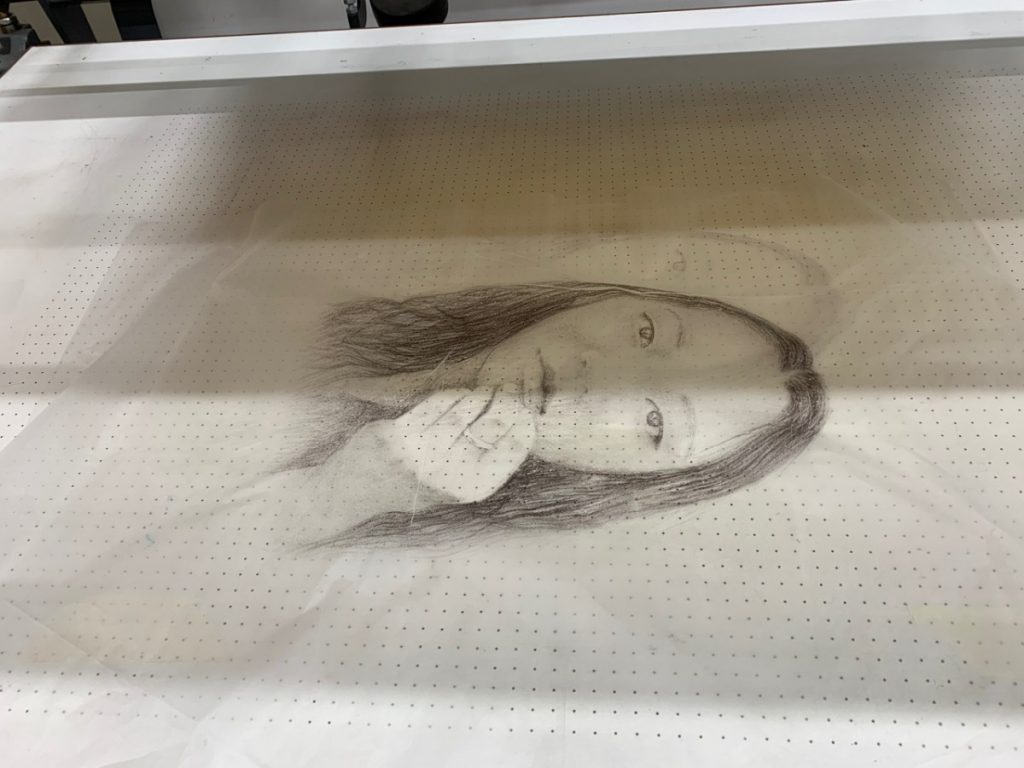
residue print on cartridge below 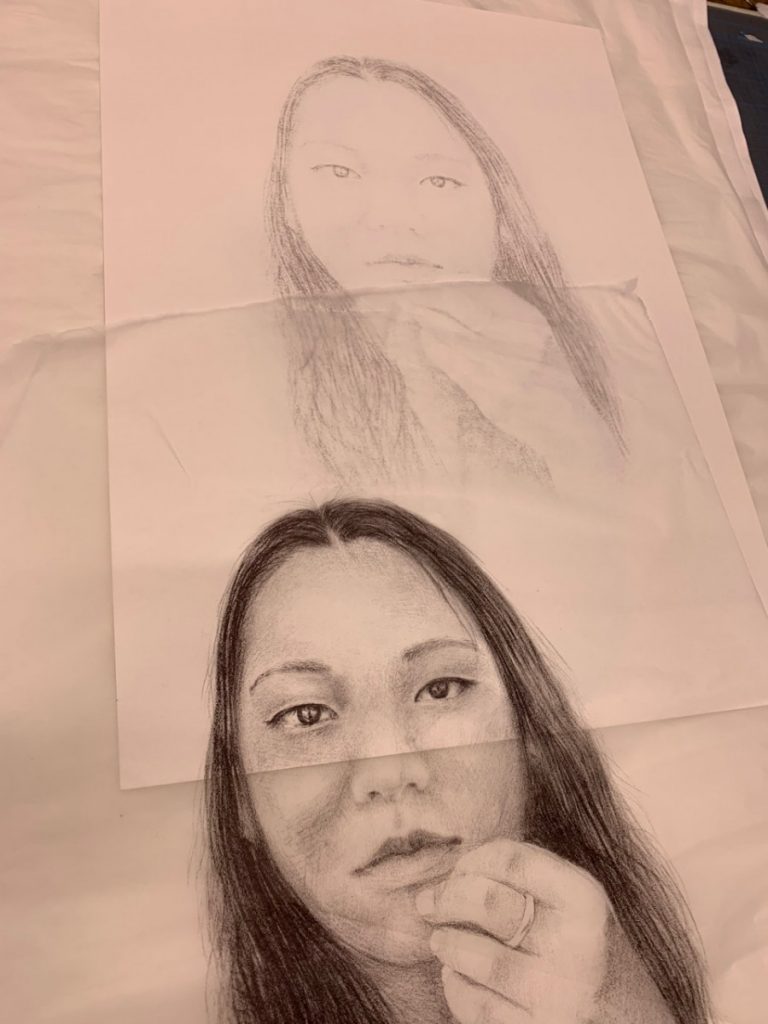
Gifu print and residue print on cartridge below 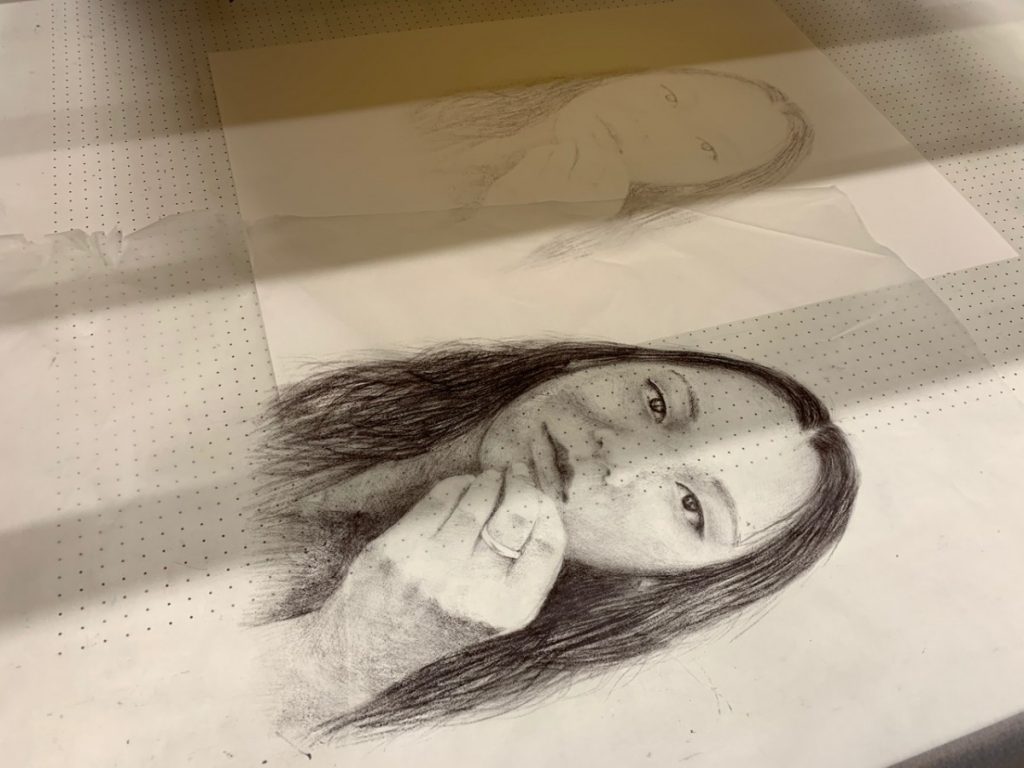
both prints on the bed 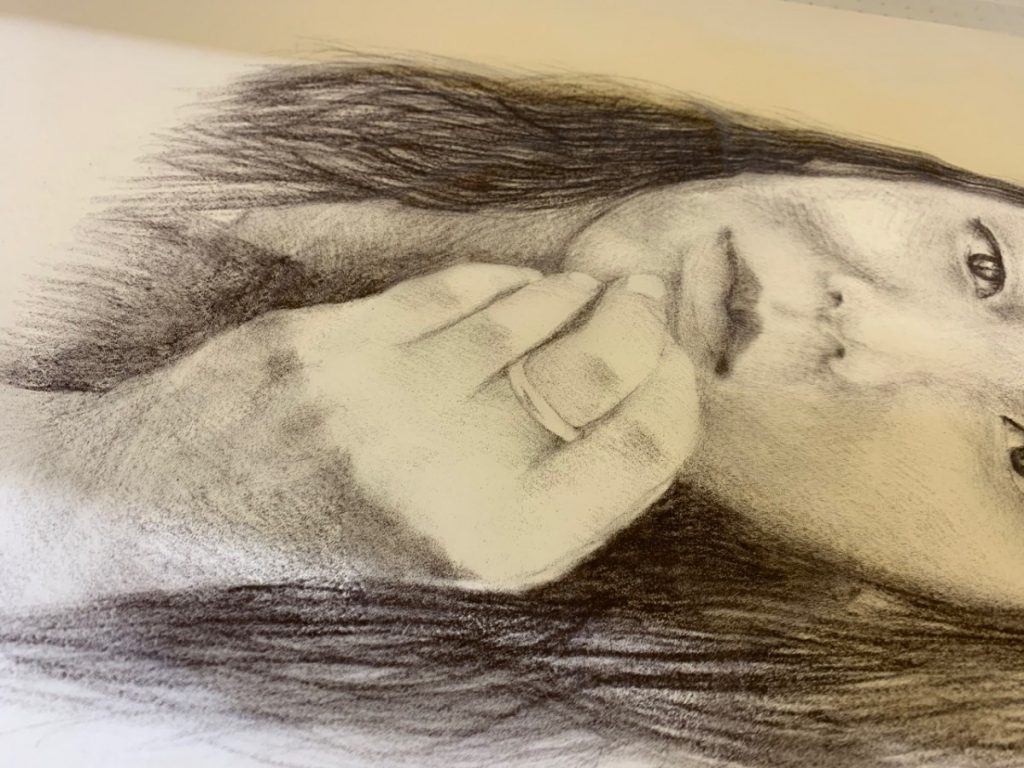
Gifu detail 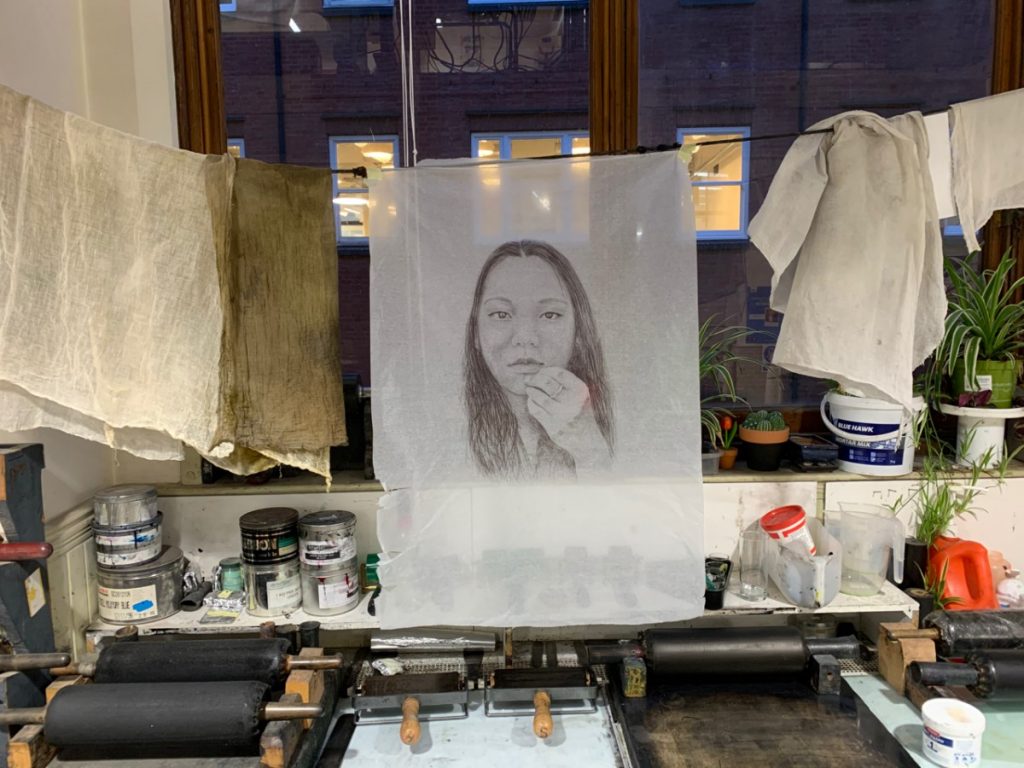
Finished Print hanging
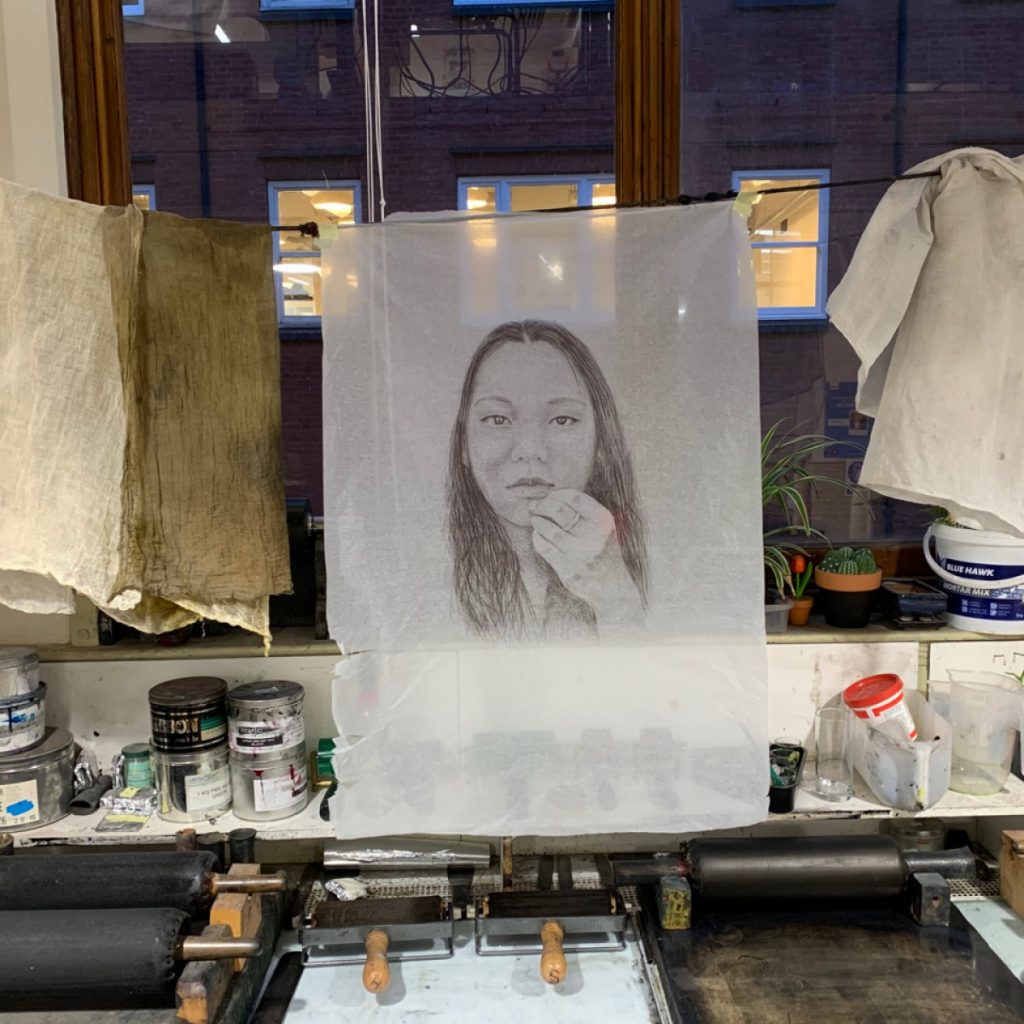
The portrait
The portrait was made with the intention to take minds away from the fear and isolation of the virus epidemic. The direct look of the subject with full focus on the head, framed by the hair with no reference to any context reality, printed on delicate paper with tears in to the edges all contribute to the impression of the precarious and unsettling situation of the many Chinese people living in China. The print is hung with transparent ties on its own on in an empty gallery space. The display enhances the isolationist atmosphere while maintaining a direct identification with the subject of the portrait. From a photo shared digitally across the globe from the East in a time of trauma a bespoke analogue fine art portrait takes a place in a suburban western galley reflecting the human individual in an uncertain foreboding global environment.
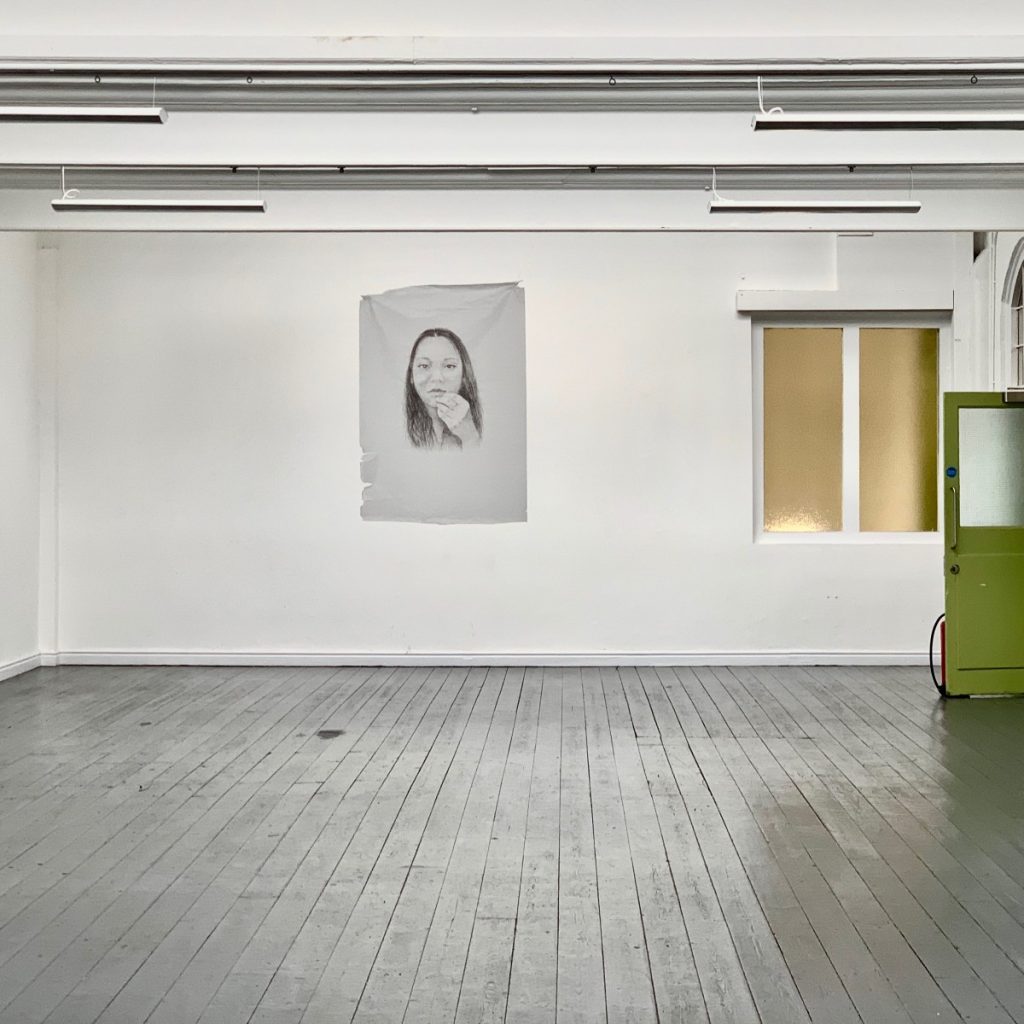
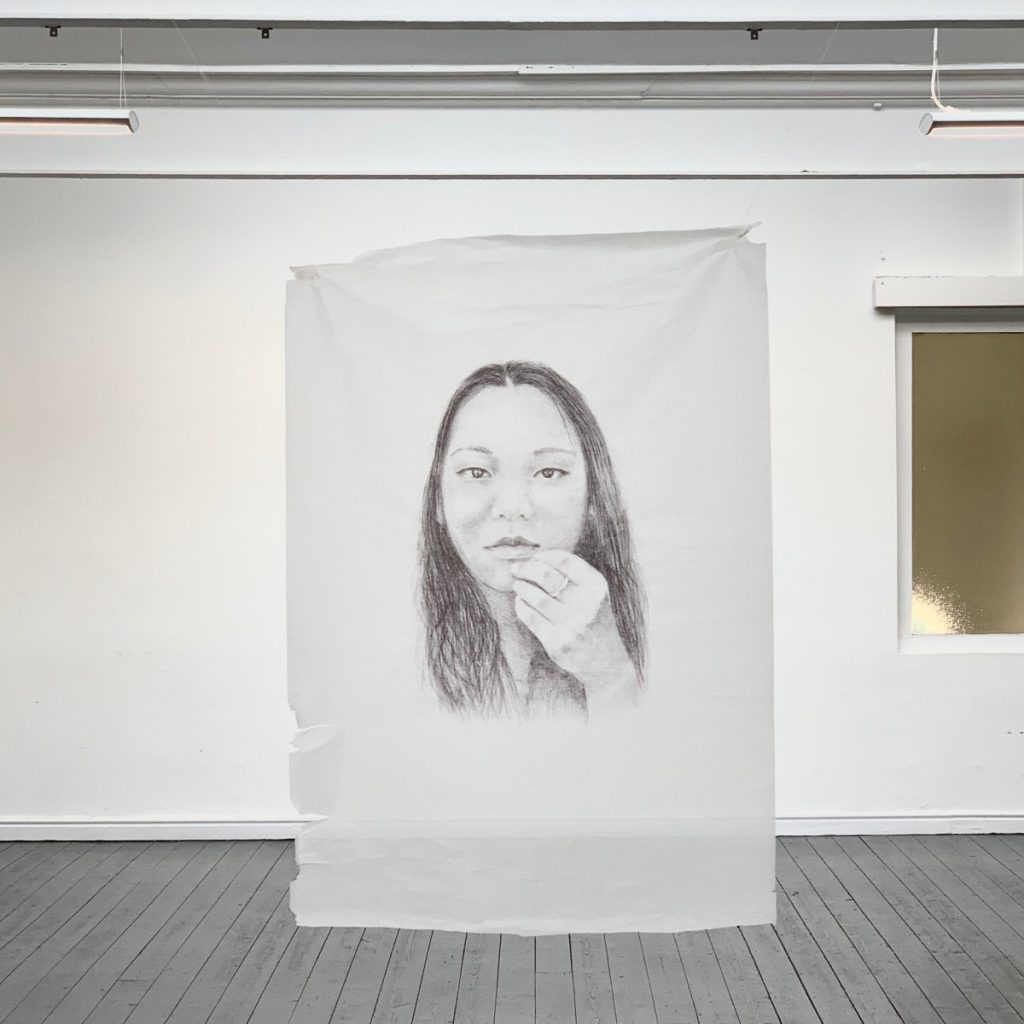
Background to the Portrait Selection.
In January 2020 Yuchen Yang had been locked in her home in Guangzhou for three weeks. To counter this personal experience and the global coverage of the virus being touted as a new zars virus from China, I offered to make a second portrait now she was living and working in her home city. The first being when she studied in the UK. My motivation was to take minds off the virus fears. As we could not meet the subject sent a selection of 5 photographic images. They were in the main smiling ‘snapshot’ photographs, however in one she was pensive and looking directly at the camera/photographer. My practice is to work from discreet photographs taken by myself that avoid self conscious poses. Based on these candid images, reflective of the subject, a drawn and printed portrait is made before sharing a finished artwork with the subject for their approval. In this instance this method was not possible and the direct to camera photograph was selected as it was adjudged the most appropriate in the context of the outbreak of the virus and Yuchen’s locked down situation.
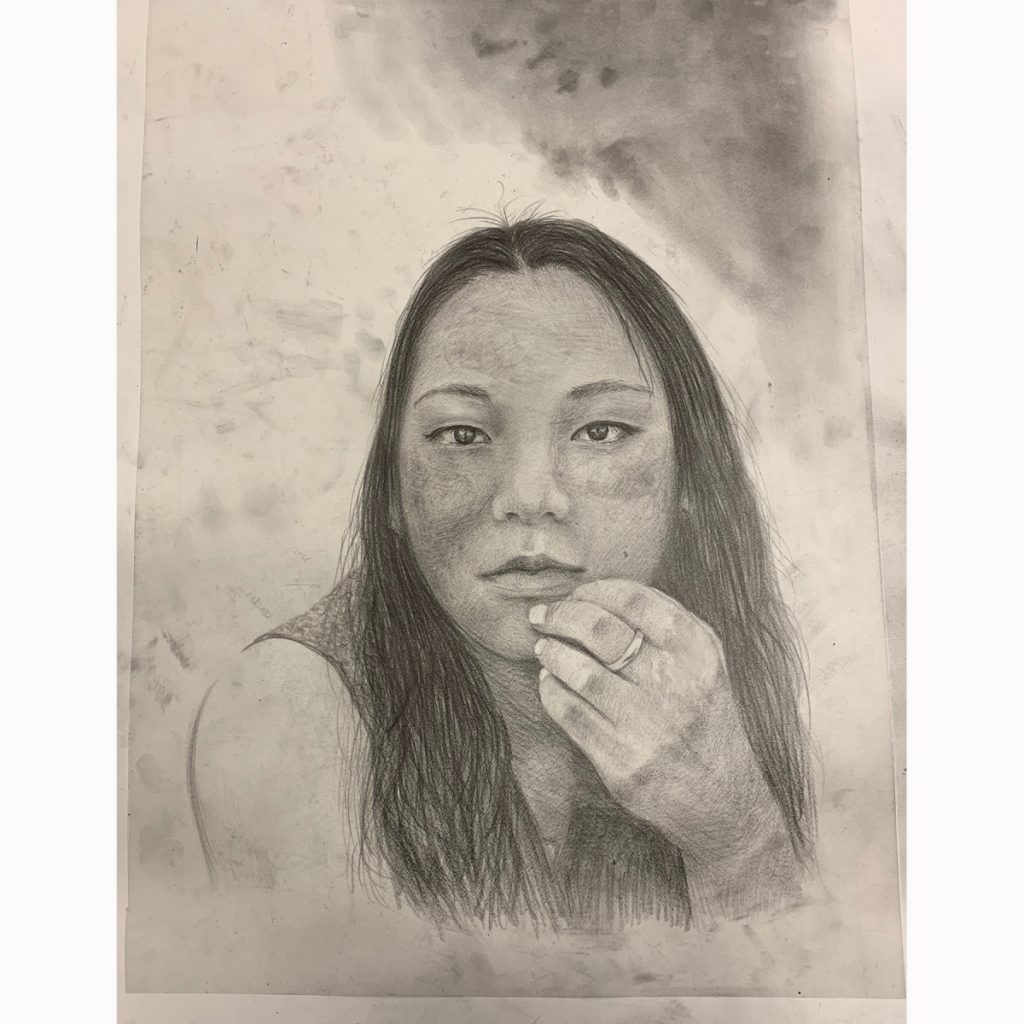
The portrait was drawn with 9B graphite stick on mark resist drafting film. Prior to printing a decision was made to erase the shoulder leaving the head framed by the dark hair with the only context being brought by the hand lifted toward the chin. The print was carried out on buff Cartridge, South Bank Smooth and tissue paper. On review an edition pf 3 was printed on the Buff Cartridge and 3 proofs on tissue paper delivering a dot matrix pattern as per the first portrait. A further print was made on the 9gsm Gifu paper.
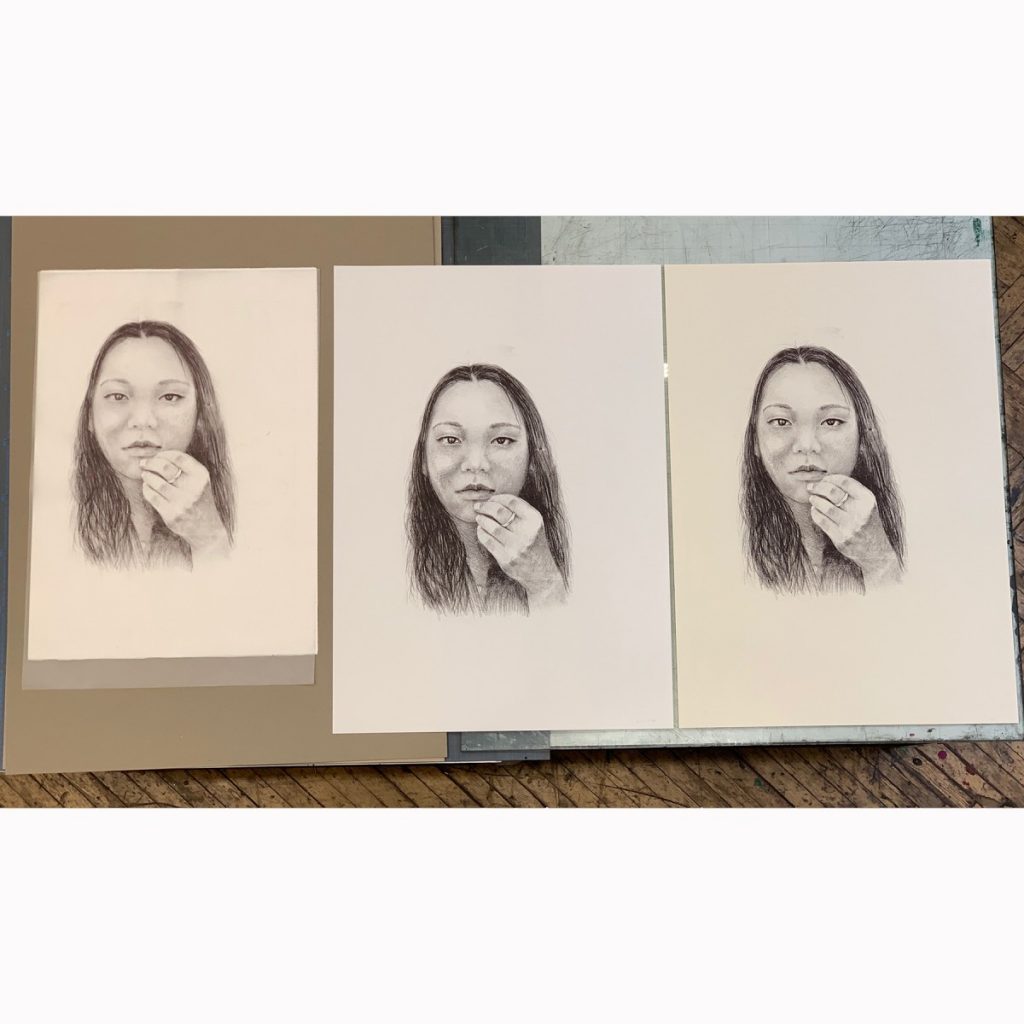
The prints were digitally shared with the subject who approved of them. She shared with her friends who confirmed the likeness and commented on the distinctive hand gesture. I responded that I had built upon the original photograph that reflected her persona. I enquired who had taken the photograph expecting into be her boyfriend, but it was in fact by a photography teacher: Franco Wang. The prints on substantial paper with the portrait surrounded by expanse of paper hang well with a sincerity that was intended at the outset. The Gifu paper with its lightness of weight and semi transparency took the ink with enough density to reflect the subject. The torn edges ellict a sense of fragility which is further taken towards a solitary condition akin to the situation of those that are unfortunate enough to contract the coronavirus. Yang’s powerful direct visual connection with the viewer brings a sense of strength in opposition to the virus and her communities’ actions to prevent illness spreading.
In agreement with the subject of the portrait was uploaded to Instagram with a message identifying with yuchen and the many people unable to leave their homes.
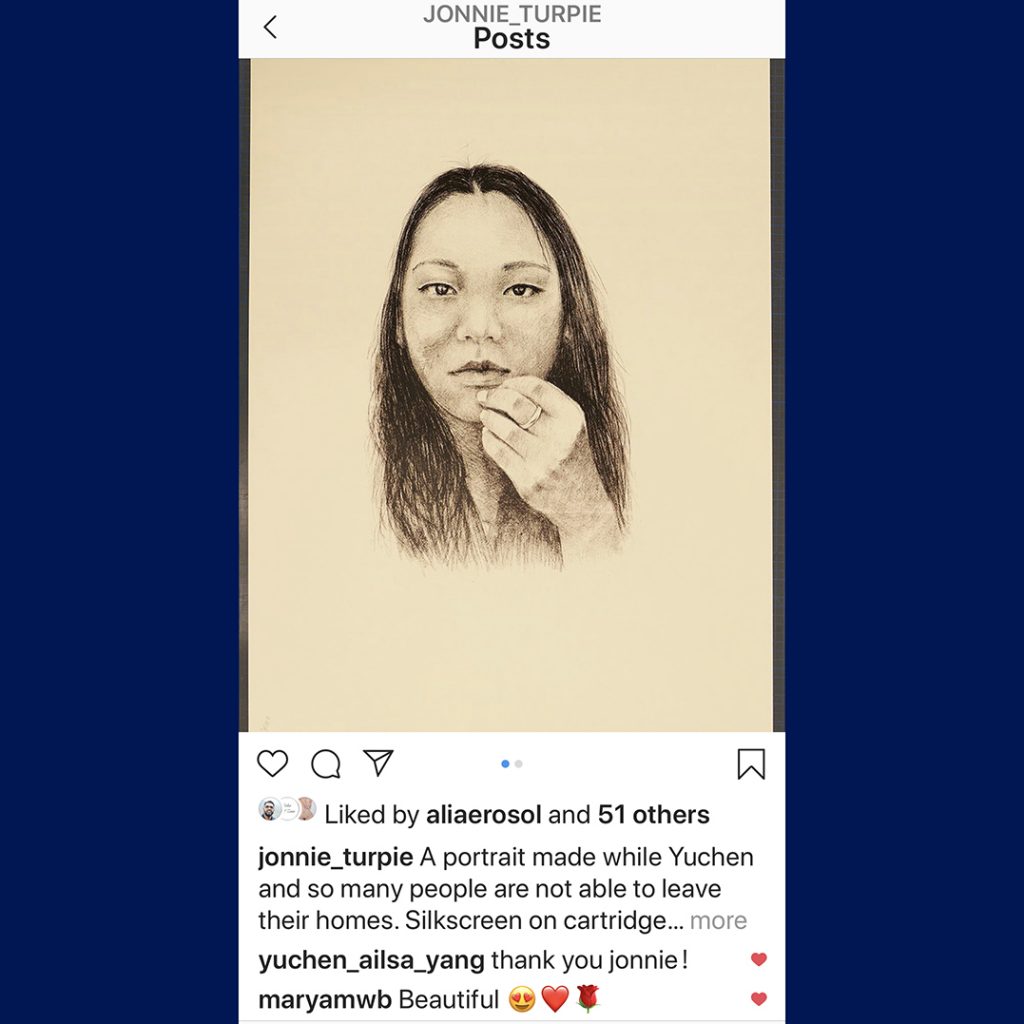
Gifu paper
History
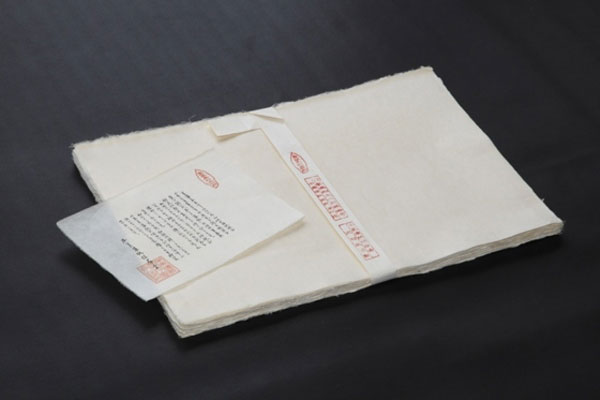
General Production Process
- 1. Preparation of raw materialsPaper mulberry, a deciduous tree shrub belonging to the mulberry family, features long fibers and is the most commonly used fiber in making Japanese paper. Mino washi is used in a variety of ways such as ceremonial, artistic (calligraphy), and practical (shoji screens). Other trees used for washi are paper bush, generally used to make printing paper with a slick and slightly glossy texture; and ganpi plant, for paper with a glossy texture.
First trees are cut at the base, with enough stock left for them to regrow. Then the wood is stripped of the outer bark and left in piles to dry. - 2. Bleaching in river waterThe dried bark piles are left in a river or tank for about five days to soften and remove impurities.
- 3. Boiling and agingTo help loosen the long fibers, the softened bark is boiled for one to two hours in an alkaline solution, usually made of lime or soda ash. In earlier times, rice hulls or paddy straw was used.
- 4. CleaningDuring this step, hunched-over craftsmen spend hours removing knots and dirt from the boiled down fibers by hand which takes a considerable amount of time. Since how impeccably this process is carried out directly affects the quality of the finished paper, such prolonged cleaning makes an enormous difference in quality, which is what sets Mino washi apart.
- 5. BeatingCleaned fibers are beaten on a board with a pestle or wooden hammer. To further thin the fibers, a rounded bundle is beaten for about ten minutes. Machines are increasingly used for this process, and fewer craftsmen remain true to this manual tradition.
- 6. PapermakingThinned fibers are thrown into a sukibune or a water tank resembling a bathtub, water is added, and a gelatinous mix made from the roots of sunset hibiscus is stirred in. When the right degree of stickiness has been achieved, the pulp is scooped out onto a sukote or wooden screen and gently mixed to prevent fibers from becoming tangled. This process makes the sheet of Mino washi thinner, finer, and stronger.
- 7. DryingThe pulp paper contains plenty of water, so it must be scooped out carefully with a stone or jackscrew. The scooped paper is allowed to partially dry until some 60% has evaporated. The paper sheets containing the remaining 40% of water are carefully laid on a board and left to dry in the sun.
- 8. FinishingAfter drying, each sheet is checked by an experienced artisan’s eye to thoroughly maintain the highest standards. Surprisingly, only 4% of the original pulpwood finds its way into the finished product of Mino washi. To make such gossamer light and durable paper requires careful and stringent work from start to finish.

